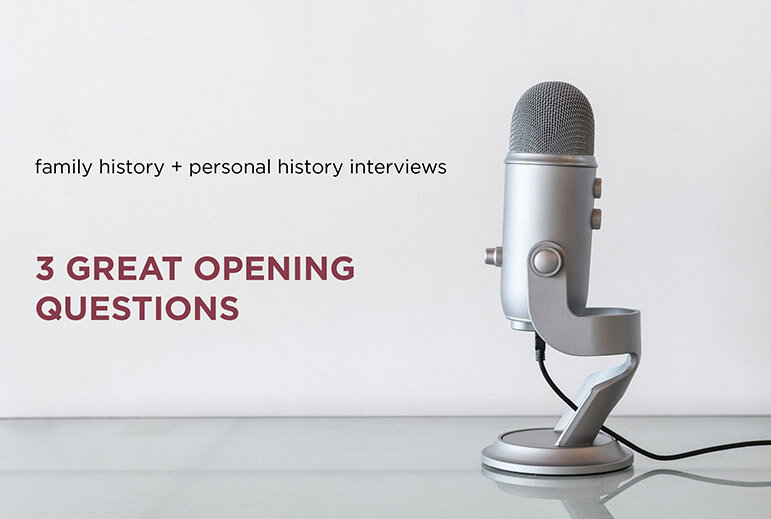100-percent listening
As both a Tim Ferriss fan and a Humans of New York devotee, I was eager to dive into Tim’s interview with HONY creator Brandon Stanton. The podcast turned the tables on Stanton, making him the subject of probing questions rather than the one holding the mic.
If you are not one of the 25 million followers of Humans of New York, here’s the scoop: Through photographs and enlightening captions (derived from much longer interviews) Stanton provides a glimpse into the lives of strangers on the streets of New York City and around the world. The snippets of conversation he shares alongside the portraits run the gamut from funny and warm to heart-wrenching and soul-satisfying—and they always, somehow, find a deep truth that taps into the universal.
“How Do You Get People to Share?”
Stanton says that the question he is most often asked is how he gets strangers to open up to him. I can understand why; his subjects allow themselves to become incredibly vulnerable during the interview process, revealing private experiences that have included physical abuse, gripping loneliness, falling off the wagon, and all sorts of painful decisions and emotions. He shares some moving accounts during the interview with Ferriss.
The HONY blog and social media accounts can be deceiving, though: It might seem as if the quotes are one-offs, that they were uttered immediately upon the questioner’s asking. The truth, however, is that Stanton often talks to his subject for more than an hour, often twice that. He earns their trust, he listens with curiosity, and he devotes himself fully to their exchange.
And his thoughts on that process—and his ability, after more than 10,000 interviews—to be truly present, are what interested me during this particular podcast.
“Humans of New York really works because the people on the street that I meet are so thankful to have somebody really listen to them,” Stanton says. “In that bubble, in that hour and a half where I’m sitting with a stranger on the street, this magic happens, where they’re willing to let me into a space in their mind or their soul or whatever it is, that they don’t really let other people into. It’s that place that I think connects with so many people.”
It’s not the questions themselves that prompt the sharing of such raw emotions and inner truths (though Stanton does list three of his standbys: What’s your biggest struggle? How has your life turned out differently than you expected it to? What do you feel most guilty about?). Rather, it is the listening, and the follow-up.
“Being heard like that is such a validating thing,” he says, and “that’s why people always share.”
The Power of Presence
“The planned questions are just springboards into a conversation,” Stanton tells Ferriss. “And how you get to that deep place with a person is absolute presence. It’s being 100 percent there.”
“You’re not thinking in the framework of an interview. You’re not looking at your list of questions. You’re not thinking about your next question. You’re not thinking about how this person fits into your idea of them and what you know about them. You’re 100 percent there, and you’re 100 percent listening to them. And your questions are 100 percent based on curiosity and what they are telling you, and nothing else.”
Amen. That’s what a good interview is all about.
Challenge Yourself to Listen
Listening to the stories that you hold dear is the biggest joy and privilege of what I do here at Modern Heirloom Books. I strive to earn your trust, and to listen with full attention and curiosity. It comes naturally for me as a genuinely curious soul, but I admit that what makes it within reach for me, truly, is the time set aside specifically for this purpose: for story sharing, for conversation, and for a true exchange, as Stanton might say, from one soul to another.
Let’s challenge ourselves, though, to partake in such meaningful conversations with someone in our lives unexpectedly. Ask questions, and listen. Give yourself the gift of time for this exchange, and give another the gift of listening—with 100 percent presence, 100 percent attention, 100 percent curiosity.
Who will you “interview”?
I’d love to hear what results!
Bonus Advice from Stanton
I couldn’t resist sharing this one last bit of advice from Stanton, who regards biography as “the best form of history”:
“Pick somebody that you admire and read their biography. If you really want some sort of guidance in your life, pick somebody who has done things that you want to do and that you really admire, and read a nice, fat 800-page biography of their lives. Find out the struggles that they went through, find out the twists and turns of their lives and the decisions they made. I don’t think there’s any better actionable road map, actionable education, than getting down to the granular level of somebody’s life and finding out how they navigated it.”
—Brandon Stanton, Humans of New York, as interviewed by Tim Ferriss
Related Reading
3 places to find unexpected questions that lead to meaningful life story writing
Extended Conversation: Anderson Cooper and his mother Gloria Vanderbilt maintained an email correspondence that delved deep—into the feelings they had previously not spoken about, and into their experiences both shared and wholly individual
This man’s stories were so clearly intriguing—to me, a stranger. Why wouldn’t they be of interest to his own children?








